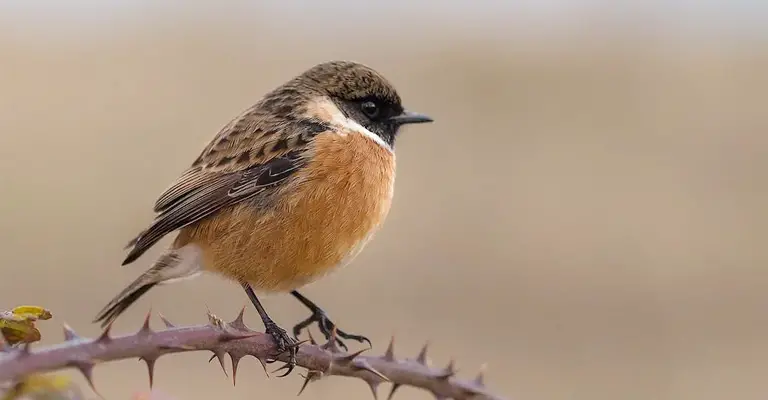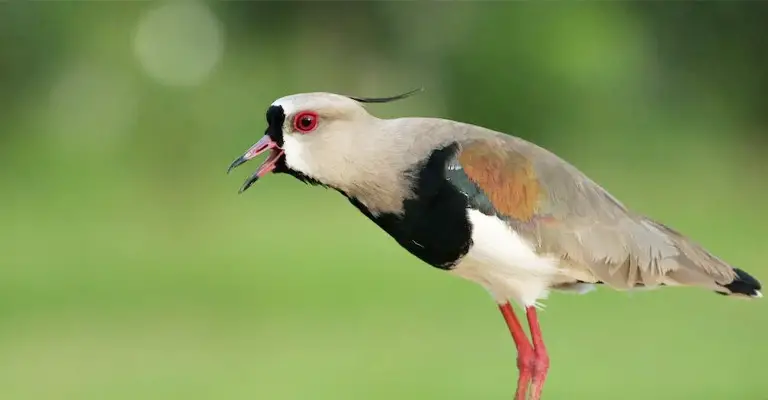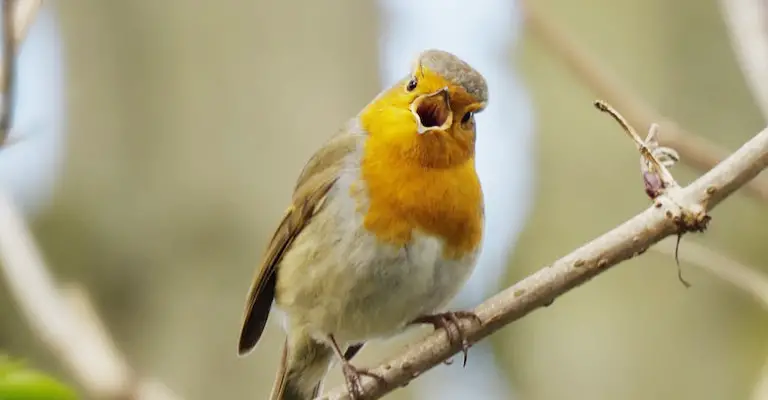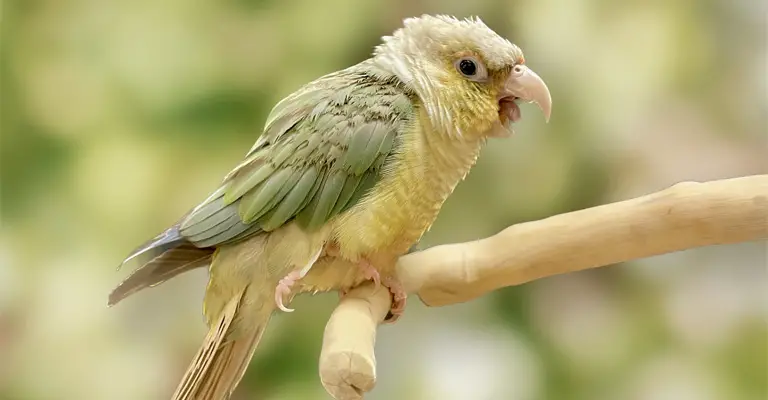Birdsong is a mesmerizing aspect of nature, captivating both seasoned birdwatchers and casual observers alike. The diverse array of sounds produced by birds serves various purposes, from communication to courtship and territorial defense.
Amidst this symphony, there exists a peculiar phenomenon in North America: birds that sound remarkably like laughter.
The enigmatic laughter-like calls of certain bird species have intrigued scientists and bird enthusiasts for years.
In this blog, we delve into the captivating world of North American bird vocalizations, exploring the reasons behind their laughter-like sounds, the scientific mechanisms behind bird vocalizations, human interpretations, and the importance of conserving these feathered wonders.
So, let’s embark on a journey to unravel the mysteries of why the birds of North America sound like laughing creatures of the wild.

The Vocal Anatomy of the Common Loon
Let’s first learn about the vocal anatomy of the North American birds. It will help you understand the fact well.
Elongated Trachea
The Common Loon possesses an elongated trachea, which is the airway that connects the bird’s throat to its lungs. This elongation allows for the generation of deep and resonant sounds.
As air passes through the elongated trachea, it produces a distinct acoustic quality, amplifying the vocalizations and giving them a unique timbre.
Unique Vocal Organs

In addition to its elongated trachea, the Common Loon possesses specialized vocal organs that contribute to its vocal versatility. These organs include the syrinx, which is the avian equivalent of the human vocal cords, and the specialized musculature surrounding it.
- The Syrinx: The syrinx of the Common Loon is a complex structure located where the trachea branches into the bronchial tubes.
It consists of membranes, cartilage, and muscles that can be controlled precisely by the bird. The syrinx allows for the production of a wide range of sounds with different frequencies, tones, and durations.
- Muscular Control: The unique musculature surrounding the syrinx enables the Common Loon to modulate its vocalizations.
By contracting and relaxing these muscles, the bird can vary the pitch, volume, and rhythm of its calls. This muscular control gives the Common Loon the ability to mimic laughter-like sounds and produces a diverse array of vocal expressions.
Contribution to Vocal Range

The combination of the elongated trachea and specialized vocal organs in the Common Loon provides it with a remarkable vocal range. It can produce low-frequency calls that carry across long distances, as well as higher-pitched and more intricate vocalizations for close-range communication.
The flexibility of its vocal anatomy allows the Common Loon to adapt its calls to different social and environmental contexts.
The specialized vocal anatomy of the Common Loon, including its elongated trachea and unique vocal organs such as the syrinx, is instrumental in enabling this bird to produce a wide range of vocalizations.
These anatomical adaptations contribute to the distinct laughing-like calls that have become synonymous with the Common Loon’s communication and identity in the avian world.
Important Facts about the Laugh-like Calls of the North American Birds

About this specific behavior of the North American Birds, there are some important factors that will surprise you. Let’s have a look over them right below.
The Laugh-like Vocalization
The Common Loon’s laugh-like calls are a unique and identifiable feature of its vocal repertoire. These calls are characterized by a series of trembling or quivering notes that closely resemble laughter.
The distinctiveness of the laugh-like calls sets them apart from other vocalizations produced by the bird.
Characteristics of the Laugh-like Sound
- Pitch: The laughing calls of the Common Loon typically have a medium to high pitch. The pitch may vary within the call series, with some notes being higher or lower than others.
- Intensity: The laughing sound of the Common Loon can range from moderate to loud, depending on the situation and purpose of the vocalization.
- Rhythm: The laugh-like calls are characterized by a rhythmic pattern, with successive notes being produced in quick succession. This rhythm gives the vocalization a distinct and recognizable cadence.
Variations in Laughing Calls and Their Potential Meanings
- Territorial Calls: Laughing calls during territorial disputes may have a distinct pattern and intensity, signaling aggression and asserting territorial boundaries.
- Courtship Displays: Laugh-like calls during courtship displays often have a more elaborate and rhythmic structure. These calls can serve as a form of communication between mating pairs and indicate readiness for breeding.
- Alarm or Warning Signals: Laugh-like calls can also be produced when the Common Loon senses potential threats or disturbances in its environment. The variations in intensity, pitch, and rhythm of these calls may convey different levels of urgency or alertness.
The context in which these vocalizations occur, along with other accompanying behaviors, provides valuable insights into the bird’s intentions and social interactions.
The Function and Purpose of Their Laugh-like Calls

If you don’t still understand the function and purpose of the North American bird’s laugh-like calls, this section can help you in this case.
Laugh-like Calls in Different Contexts
- Territorial Disputes: Laughing calls play a crucial role in territorial disputes among Common Loons. When defending their territories, loons may produce intense and aggressive laughing calls to establish dominance and communicate territorial boundaries to other individuals.
- Courtship Displays: Laugh-like calls are also an integral part of courtship displays. During mating season, male and female loons engage in elaborate vocal duets, including laughing calls, to strengthen pair bonds and communicate their reproductive readiness to potential mates.
- Responses to Threats: Laughing calls can serve as an alarm or warning signal in response to potential threats or disturbances. These vocalizations communicate danger to other loons in the vicinity and help coordinate group responses for self-defense.
Communication and Identification
Laugh-like calls play a vital role in communication and identification among Common Loons. These vocalizations allow individuals to recognize and locate one another, even in large bodies of water.
Each loon has a unique vocal signature, enabling them to identify familiar individuals and maintain social connections within their population.
Contributions to Survival and Social Interactions
- Territorial Defense: Laugh-like calls to aid in defending territories, reducing the likelihood of conflicts, and promoting efficient resource allocation for nesting and foraging.
- Pair Bonding: Laughing calls contribute to pair bonding between mates, strengthening their relationship and facilitating successful reproduction.
- Cooperative Behavior: Laughing calls can facilitate cooperative behaviors among loons, such as group defense against predators or coordinating hunting efforts, increasing the chances of survival for the individuals and the population as a whole.
- Species Recognition: Laugh-like calls also play a role in species recognition, allowing loons to identify members of their own species and maintain distinct social interactions within the broader avian community.
Laugh-like calls in Common Loons are not merely auditory expressions but serve important functions in their survival and social interactions.
These vocalizations facilitate communication, establish territorial boundaries, strengthen pair bonds, and enhance cooperation among individuals, contributing to the overall success and well-being of the species.
The laughing sounds produced by Common Loons serve various functions in different contexts, including territorial disputes, courtship displays, and responses to threats.
Comparisons and Misconceptions
The following points on the comparisons and misconceptions are also essential to learn about in this scenario.
Addressing Misconceptions
There are misconceptions regarding the Common Loon’s laughing-like calls that need clarification. It is important to note that these vocalizations are not actual laughter in the human sense.
They are natural vocalizations specific to the Common Loon and serve as a means of communication and identification within their species.
While the calls may sound reminiscent of laughter to human ears, it is crucial to understand that the intent and function behind these vocalizations are distinct from human laughter.
Comparing Common Loon’s Vocalizations
The laughing-like calls of the Common Loon possess unique qualities that set them apart from other animal sounds or human laughter.
- Unique Timbre: The Common Loon’s vocalizations have a distinct timbre that is different from other animal sounds or human laughter. Their calls possess a quivering or trembling quality, creating a unique acoustic signature.
- Functional Significance: Unlike human laughter, which often serves as a response to humor or joy, the Common Loon’s laughing-like calls have specific functions related to communication, territorial defense, courtship, and alarm.
They are part of a sophisticated communication system that enables loons to convey specific messages and maintain social interactions.
- Species-Specific Identification: The Common Loon’s vocalizations, including the laughing-like calls, contribute to species recognition among loons.
These calls help distinguish them from other bird species and allow individuals to identify members of their own species, strengthening social bonds and facilitating appropriate behavioral responses.
By emphasizing the unique qualities and functional significance of the Common Loon’s vocalizations, we can appreciate the intricate communication system of these birds and avoid misconceptions that may arise from perceiving their calls as synonymous with human laughter.
The laughing-like calls of the Common Loon are not actual laughter but serve important communication functions within their species.
By clarifying misconceptions and highlighting the unique qualities of their vocalizations, we can develop a deeper understanding and appreciation for the role these cells play in the lives of Common Loons.
The Significance of Laughing-like Calls in North American Avian Fauna
Finally, let’s learn about the significance of this behavior of the North American birds. I’m sure that the following points will amaze you.
Role in the Common Loon’s Distinct Identity
The vocalizations of the Common Loon, including its laughing-like calls, play a crucial role in shaping the bird’s distinct identity within North American avifauna.
- Iconic Sound: The laughing calls of the Common Loon have become synonymous with the bird itself, representing its presence and captivating the imagination of bird enthusiasts and nature lovers.
- Auditory Signature: These vocalizations serve as an auditory signature of the species, enabling individuals to identify and differentiate the Common Loon from other bird species within the region.
- Vocal Repertoire: The unique vocal repertoire, including the laughing-like calls, distinguishes the Common Loon and contributes to its overall appeal and recognition among birdwatchers and researchers.
Cultural Significance
The Common Loon holds cultural significance and has inspired various artistic expressions, folklore, literature, and indigenous traditions across North America.
- Indigenous Traditions: In indigenous cultures, the Common Loon is often revered and regarded as a spiritual symbol associated with wisdom, tranquility, and connection to nature. Its vocalizations, including the laughing-like calls, are incorporated into stories, rituals, and beliefs.
- Folklore and Literature: The haunting and distinctive calls of the Common Loon, including the laughter-like sounds, have inspired folktales, poetry, and literature. They are often used symbolically to evoke a sense of wilderness, mystery, or nostalgia in literary works.
- Conservation and Tourism: The Common Loon, with its unique vocalizations, has become an emblematic species for conservation efforts and a draw for ecotourism in North America. Its presence and vocalizations attract visitors, fostering an appreciation for biodiversity and promoting conservation initiatives.
The laughing-like calls of the Common Loon contribute to its distinct identity within North American avifauna. Furthermore, these vocalizations have permeated cultural narratives, becoming part of folklore, literature, and indigenous traditions.
The Common Loon’s vocalizations hold both ecological and cultural significance, enriching the natural heritage of the region and fostering a deeper connection between humans and the avian world.
FAQs
Yes, laughing-like calls are a characteristic vocalization of the Common Loon species. However, individual variations in the frequency and quality of these calls can exist.
Laughing-like calls can be heard throughout the year but are most commonly associated with territorial disputes, courtship displays, and breeding seasons.
However, loons may produce these calls in other contexts as well.
The laughing-like calls of the Common Loon are unique to this species. While some other bird species, like the Green Woodpecker and the Kookaburra, are known for their laughing-like vocalizations, the specific characteristics and purposes of their calls differ from those of the Common Loon.
Yes, the laughing-like calls of the Common Loon can carry over long distances, especially across calm bodies of water. This ability to project their calls allows loons to communicate and establish their presence within their territory.
The primary function of the laughing-like calls of the Common Loon is intra-specific communication within their species. While they may be heard by other bird species, the calls are not specifically intended for interspecies communication.
Conclusion
The laughter-like sounds produced by certain North American bird species have captivated our imagination and sparked curiosity about the intricate world of avian vocalizations.
Throughout this exploration, we have discovered that these unique calls serve important purposes in bird communication, courtship, and defense.
The science behind bird vocalizations, including their anatomy, learning abilities, and environmental influences, further deepens our understanding of these fascinating creatures.
So, whether you’re an avid birdwatcher or simply a curious observer, take a moment to listen and marvel at the enchanting symphony of laughter echoing through our skies.
Together, let’s cherish and protect these extraordinary creatures and their melodious gift to the natural world.